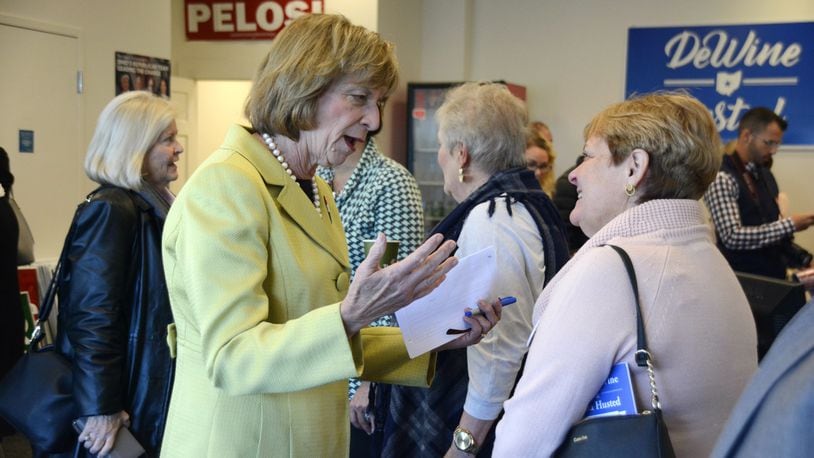“Whether it’s Mike DeWine’s ads about (untested) rape kits or if you’ve seen (congressional candidate) Aftab Pureval’s ads — they have consistently featured an eclectic and diverse group of women in almost every ad that he has run and that is by design,” he said. “Parties and candidates have been trying to configure women — and how you win (the) women (vote) without using the normal set of tools that can motivate others by partisan signaling.”
ELECTION 2018: Check out our Voter Guide to learn more about the candidates
Fifty-one percent of Ohio residents are women, and 50.8 percent of the country’s residents are women, and they statistically and consistently out-vote men.
Nationally, 58.1 percent of eligible women voted in the 2016 presidential election while 53.8 percent of men voted, and this has been a trend for at least the past 20 years, Kelley said.
So getting women out to the polls “is going to be very important,” Kelley said.
Women are primarily driven by issues so “they become an indispensable group of voters that you need to attract,” he said.
On Wednesday, Republicans and Democrats rallied their respective contingents in Butler County to vote.
ELECTION 2018: Race for Ohio governor still tied, poll finds
Ohio Democratic Party Chairman David Pepper said Wednesday afternoon during the party’s “People First” bus tour stop in Hamilton that his party has women candidates “at every level.”
“Women especially, but I think all voters, are seeing the cultures in Columbus and Washington are so broken that adding more women in office this year is the easiest and quickest way to change these broken cultures,” he said.
Butler County Democratic Party Chairman Brian Hester said during the party’s tour stop that country, state and county races need to be more reflective of the community.
“I believe a woman’s place in the campaign is on the ballot,” he said.
The wives of the all-male slate of Republican statewide candidates are hoping to appeal to women voters in Ohio. They toured several counties on Wednesday, and plan to continue that Thursday. They kicked off the two-day tour at Butler County’s GOP headquarters in Fairfield Twp., where Tina Husted, wife of Lt. Gov. candidate Jon Husted, said, “It’s important to show unity” and highlight “the passion behind the candidates and families and lives.”
“We’ve had a great eight years, and we want to continue to grow,” she said.
Fran DeWine, the wife of Gov. candidate Mike DeWine, said the families of the candidates are “so passionate about what we’re doing in supporting our partners. We want to share our passion with everyone else about why these people would be really good elected officials.”
Mark C. Smith, Cedarville University political science professor said both parties “will need strong female vote totals” to maintain their partisan control, or flip it. But he said evidence suggests the country may be moving past gender as a defining political category.
“With candidate wives running around the state, the goal is not to appeal to women in general, but to generate enthusiasm among women already in your political corner,” Smith said. “Gender matters, but it does not dominate more basic factors like partisanship and ideology.”
About the Author
